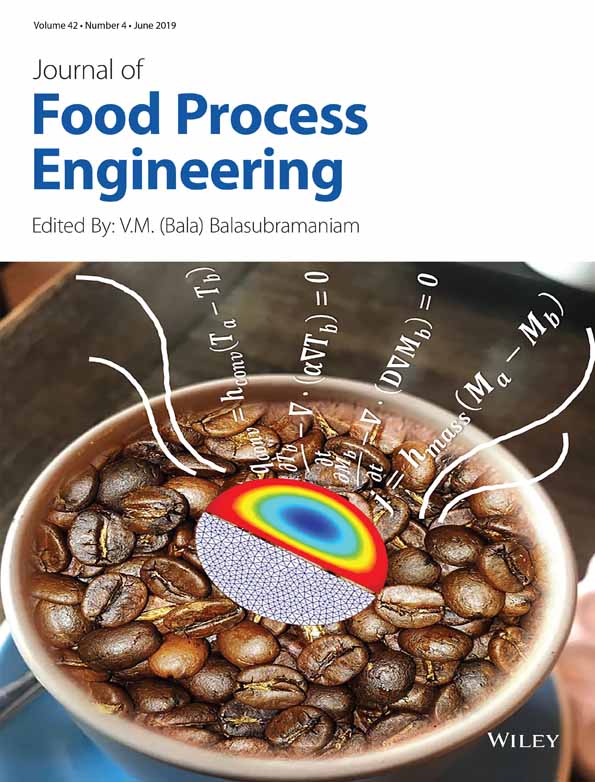Discrimination of aged rice using colorimetric sensor array combined with volatile organic compounds
Funding information China Postdoctoral Foundation, Grant/Award Numbers: 2016M601746, (2016M601746; Jiangsu province Postdoctoral Foundation, Grant/Award Number: 1601135B; Government of Jiangsu Province, Grant/Award Number: 1601135B; National Key Technology R&D Program of China, Grant/Award Number: 2016YFD0401205-3
Abstract
This article studied the distribution of volatile organic compounds (VOCs) expose to colorimetric sensors array on stored rice. COMSOL Multiphysics software was utilized to simulate the flow field in reaction chambers, where arc baffle with different curvature in different position were employed for optimization. It was observed that the velocity field was the most uniform when the curvature of baffle was 3.3 and the vertical distance from the front end of the baffle to the inlet was 1.5 cm. The research results revealed that color changes of the sensors exposed to the same VOCs in the designed chamber were more uniform than that of free volatilization chamber. Fresh and aged rice samples were 100% correctly identified by principal components analysis when the designed chamber was used, while the recognition percentage was 90% using the free volatilization chamber.
Practical applications
This work presents a nondestructive method for the discrimination of aged rice. The data and figures presented clearly suggest the optimized chamber can extremely improve the reaction between volatile organic compounds and colorimetric sensor array. When the optimized reaction chamber was performed to detect the fresh and aged rice, all of the samples were discriminated successfully. This research results supports a potential way for fast, nondestructive detection of freshness in rice industry.
CONFLICTS OF INTEREST
The authors declare that they have no competing interests.




